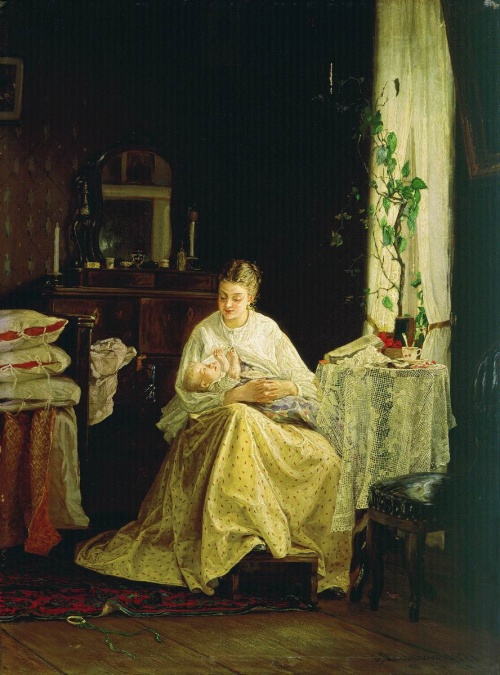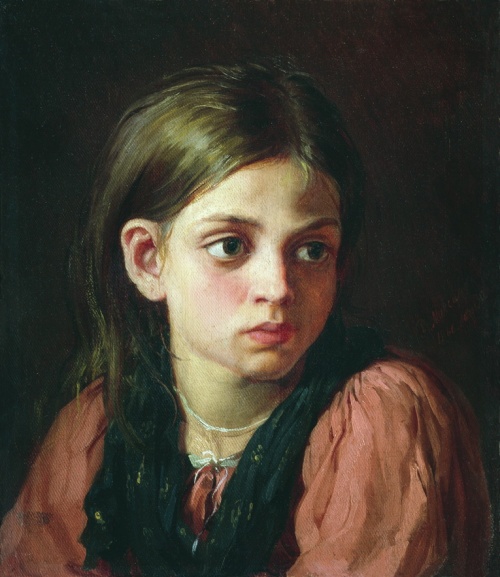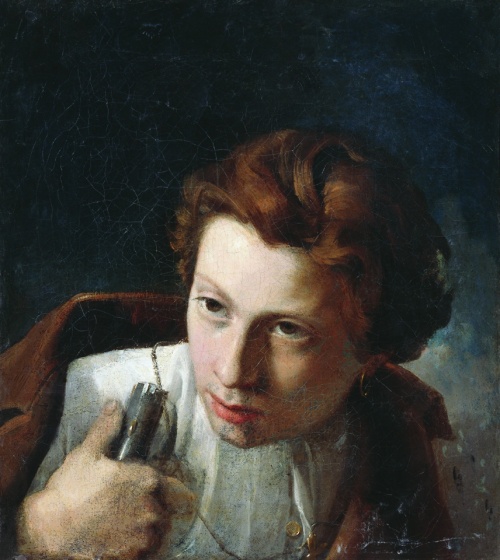Russian artists - Vasily Maksimovich Maksimov (47 works)
Разрешение картинок от 900x574px до 6347x8000px
Vasily Maksimovich Maksimov (January 17 [29], 1844, the village of Lopino, near Novaya Ladoga - November 18 [December 1], 1911, St. Petersburg) - a great Russian artist, Wanderer, genre painter.
Author: Maksimov Vasily Maksimovich (1844-1911)
Genre: genre painting
Resolution: 422x900 to 2013x1250
Number of paintings: 47
Format: jpg
Size: 67 MB
Biography
V. M. Maksimov was born into a peasant family. Having lost his parents at an early age, he was apprenticed to an icon-painting workshop, where he received his first painting lessons.
In 1863, Maksimov entered the St. Petersburg Academy of Arts as a volunteer, and in 1864 he became a member of the Art Artel, headed by P. A. Krestonostsev. The artel was organized “for joint work and life,” like the artel of I. N. Kramskoy, but it existed for little more than a year. The painting “The Sick Child” (1864), painted by Maksimov at that time, was awarded the gold medal of the Academy of Arts “for expression.”
Having completed the entire academic course in three years, the artist refused to compete for a large gold medal, as the group of “fourteen” led by I. N. Kramskoy once refused. “My convictions force me not to go to the competition,” he said, “I am against traveling abroad, because I want to first study Russia and the poor Russian village, which no one here knows, does not know village poverty and grief.”
Having received the title of class artist of the 3rd degree in 1866, Maksimov left the walls of the Academy of Arts and went to the village of Shubine, Tver province, to the Golenishchev-Kutuzov estate, to serve as a home art teacher. In the summer of the same year, he made a trip to the Volga, which left a lot of vivid impressions about the life of the people. Later he told P. M. Tretyakov that “he did not paint city ladies in silk dresses, uniformed workers and other unfamiliar people and switched forever to village life.” His work "Grandmother's Tales" (1867), shown at the exhibition of the Society of Artists, was awarded and then purchased by Tretyakov for the art gallery.
However, Maksimov’s talent was most fully revealed in the film “The Arrival of a Sorcerer at a Peasant Wedding” (1875). This epic canvas from folk life, with an abundance of characters creating a “choral beginning”, is marked by a deep knowledge of village life. The poetic images of the bride and groom, the hawk-like profile of the sorcerer, the expressive types of old people were written from specific people and are distinguished by great truth in life. The peasants themselves, who posed for Maksimov, told him: “You are ours, even if you write, it’s not for fun.”
In the painting “The Sick Husband” (1881), the artist continued a theme close to him, depicting a sick village man on a couch in a hut, where a mournful female figure was bending over the icons. During these years, Maksimov created a whole series of paintings dedicated to the life of the poor, the difficult lot of peasants: “Poor Dinner” (1879), “Auction for Arrears” (1880), “Bread Loan” (1882), “Blind Master” (1884), "In Her Lane" (1891), "Dashing Mother-in-Law" (1893). About similar works by the artist I. N. Kramskoy said: “Yes, yes, the people themselves painted their picture. Here, genre painters, from whom you learn.” The atmosphere of the post-reform village and the decomposition of patriarchal life were shown by Maximov in his work “Family Division” (1876), depicting the division of property between two brothers. Selfishness and greed, on the one hand, and defenselessness and meekness, on the other. This eternal theme was especially strongly expressed in female images: the artist contrasted the deprived and deceived younger daughter-in-law, in whose appearance the tradition of Venetsianov’s poetic female types was reflected, with the greedy and contentious wife of his older brother. “The rock of peredvizhniki”, “the most indestructible stone of its foundation” - that’s what I. E. Repin called Maximov.
Participant of the first traveling exhibition, unanimously accepted into the ranks of the TPHV in November 1872, the artist devoted all his work to depicting the people. Among Maksimov’s significant works, the painting “Everything is in the Past” (1889) stands somewhat apart from the central theme of his work. Imbued with nostalgia for bygone times, it continues the motif of Turgenev’s dying “nests of nobility”. The artist depicts a scene in an old estate, with a boarded-up manor house, which once survived better times, and now only reminds the former owner of them, who moved to a peasant house and is relaxing in an armchair under its windows. The frail but majestic figure of the old lady, immersed in memories, becomes even more eloquent when contrasted with the touching appearance of her companion - an old peasant woman, sadly whiling away her days near the lady. The painting was a great success and was repeated many times by the artist.
The last two decades of Maksimov's life were full of bitter need and deprivation. Having outlived his themes (the Peredvizhniki were replaced by artists of new directions), he found almost no buyers or customers; he continued to paint scenes from peasant life, and shortly before his death he began the painting “Forgiveness Sunday”, but did not finish it. Poverty, exhaustion, and illness brought the artist to his grave. However, in the history of Russian art, Maximov took his rightful place as a painter of everyday life.tel and expert on folk life.































